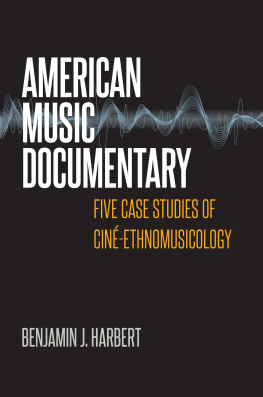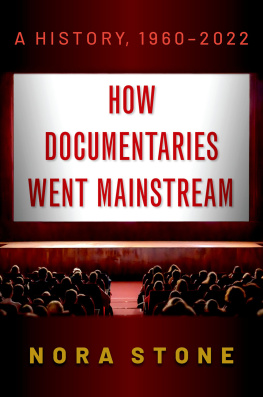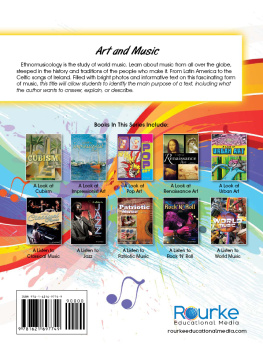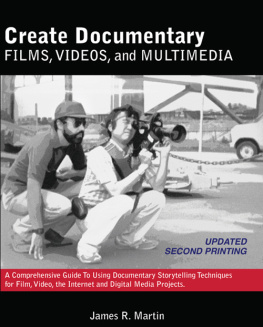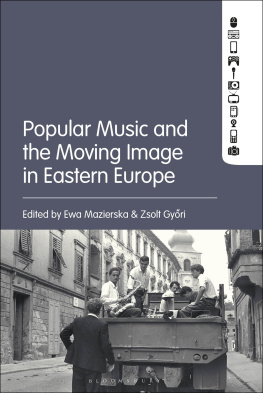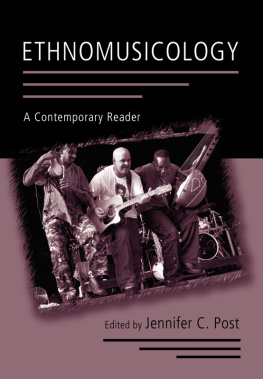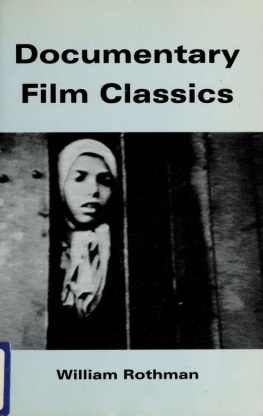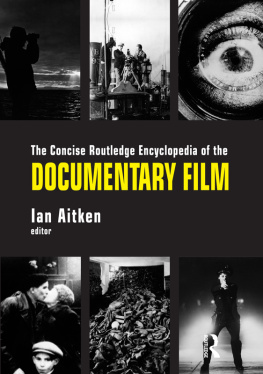
AMERICAN MUSIC DOCUMENTARY
BENJAMIN J. HARBERT

American Music Documentary
FIVE CASE STUDIES OF CIN-ETHNOMUSICOLOGY
WESLEYAN UNIVERSITY PRESS Middletown, Connecticut
Wesleyan University Press
Middletown CT 06459
www.wesleyan.edu/wespress
2018 Benjamin J. Harbert
All rights reserved
Manufactured in the United States of America
Typeset in Aller and Arnhem types
by Tseng Information Systems, Inc.
Library of Congress Cataloging-in-Publication Data
Names: Harbert, Benjamin J. author.
Title: American music documentary: five case studies of cin-ethnomusicology / Benjamin J. Harbert.
Description: Middletown, Connecticut: Wesleyan University Press, 2018. | Series: Music/Interview | Includes bibliographical references and index. | Includes filmography. | Identifiers: LCCN 2017036468 (print) | LCCN 2017042746 (ebook) | ISBN 9780819578020 (ebook) | ISBN 9780819578006 (cloth: alk. paper) | ISBN 9780819578013 (pbk.: alk. paper)
Subjects: LCSH: Documentary filmsUnited StatesHistory and criticism. | Motion picture musicUnited StatesHistory and criticism.
Classification: LCC PN1995.9.D6 (ebook) | LCC PN1995.9.D6 H295 2018 (print) | DDC 070.1/8dc23
LC record available at https://lccn.loc.gov/2017036468
5 4 3 2 1
Cover illustration: soundwave yewkeo/iStockphoto.
To Marina Goldovskaya
CONTENTS
Albert Maysles, Gimme Shelter (1970)
Jill Godmilow, Antonia: A Portrait of the Woman (1974)
Shirley Clarke, Ornette: Made in America (1985)
D. A. Pennebaker and Chris Hegedus, Depeche Mode: 101 (1988)
Jem Cohen and Fugazi, Instrument (1999)
ILLUSTRATIONS
ACKNOWLEDGMENTS
Ideas become a book when those ideas seed discussions that then feed the work of writing and revising. I am grateful to all the people who sustained years of deep thinking, rigorous discussions, and hard work.
First of all, this book would not be what it is without the willingness of the directors and musicians to discuss the films that theyve seen countless times, to shift their own perspectives on their films, and to put up with exploratory conversations and follow up correspondence. For example, Albert Maysles came to Washington, DC, and later invited me to his home in Harlem. His wife, Gillian Walker, made minestrone soup as we continued our discussion into the evening. During our last interview, days before he passed away, Als family invited me into their home to be with the family and insisted that I stay until he was well enough to speak. His daughter Sarah Maysles graciously waited with me, every bit as engaging as her father. Interviewing him at the end of his life gave me more than information about filmit revealed to me how a commitment to curiosity and love could bridge a career and a family. Jill Godmilow also invited me to her home after her visit to Washington. We sat at her kitchen table discussing a film that is nearly as old as I am. In addition, Godmilow gave me detailed and thoughtful advice on my own film and has made me more critical of film as a political and cultural practice. Jem Cohen came to campus for a residency and later welcomed me into his home in New York. Our conversation drifted from the kitchen table to his studio, examining films frame by frame. I am also grateful to Ian Mac-Kaye and Guy Picciotto of Fugazi, who encouraged discussion about how they collaborated with Cohen and appeared in Instrument. D. A. Pennebaker and Chris Hegedus invited me to their office for a long discussion and later came to DC to do a master class at Georgetown University.
The late Shirley Clarke has a voice in this book thanks to all those who have kept her work alive. Kathlin Hoffman Gray and Shirleys daughter, Wendy, entertained long phone conversations and follow up over e-mails to help with their perspectives on Clarkes film. Dennis Doros of Milestone Film & Video helped me locate Shirley Clarkes materials and Mary K. Huelsbeck of the University of Wisconsin Center for Film and Theater Research was immensely helpful at identifying and making available documents that led to the central ideas for the chapter on Clarkes film. There was more material than I could examine alone. Thanks to Julian Lynch and Steve Larongas work transcribing Clarkes production audio, I was able to find the perspective that framed my approach to Clarkes inscrutable film and to pull Clarkes voice into the chapter. Conversations with Marc Cooper and Lauren Rabinovitz were pivotal to my understanding of Clarke and her relationship to the production of her final film.
Universities incubate scholarship. Maria Snyder and the Graduate Division at Georgetown University have been generous in providing me writing and research support. Dean Chester Gillis encouraged me to both make films and write as I developed my scholarship. Carole Sargents writing groups gave me a place to discuss the writing and the process of writing. I am grateful for the unique departmental intersection between Georgetowns Music Department and the Film and Media Studies Department. Dean Bernie Cook, leading the latter department, has been an ally, making a case for film as a form of scholarship during lunch discussions and presentations of films. Interdisciplinary works come out of interdisciplinary communities. My colleagues Anna Celenza, Anthony DelDonna, and David Molk gave me incredibly useful feedback to draft chapters. Their command of currents in musicology and music theory was an important resource, granting me a solid sounding board as I ventured outside of ethnomusicological topics.
My teaching experience has provided insight for developing this book. The many semesters of my seminar/workshop The Music Documentary at Georgetown University have given me a forum for developing ideas, testing out films, and taking risks at interpretations. The framework for the class came from my work with Marina Goldovskaya at UCLA. She modeled an approach to teaching documentary film and worked with me on a related doctoral examination. I am indebted to all my music documentary studentstoo many to namewho challenged themselves to think about music by reading ever-shifting film studies literature and by taking their own risks by making their own smart films. Students have also been invaluable as a forum in which I tested new arguments. That forum branched out to embrace many important filmmakers. Guests to class included those featured here in the book. Albert Maysles, Jill God milow, D. A. Pennebaker, Chris Hegedus, and Jem Cohen traveled to campus and took student questions seriouslybringing their deep experience to our forum, as well as demonstrating their own continued practices of inquiry and human connection. The dialogue provided me ways of thinking that I could not have developed on my own. Other guest filmmakers also visited throughout the years to keep up a rigorous and illuminating discussion about merging theory and practice. I am grateful to Brendan Canty, Christoph Green, James June Schneider, Abby Moser, Jim Saah, and Jeff Krulik for taking the time and demonstrating interest, showing their work (finished and unfinished), and engaging us thoughtfully. A second volume could contain these discussions. A body of student films has developed in the wake of these discussions and engagements with daring and intelligent cinema.
There are hundreds of hours of work given to this book that are not mine. My research assistants provided invaluable support throughout the process. Allie Prescott, Rose Hayden, Dominique Rouge, and Viktoriya Kuz transcribed interviews and read through drafts of chapters. Ashwin Wadekar assembled the filmography appendix. Most of all, Sam Wolter worked with me for two years, doing everything from finding out economic data to counting the number of frames in certain sequences. Sam read multiple drafts, insisted that sections be intelligible, and most of all, provided an important weekly check-in as I progressed through the project. He also put together the glossary appendix.
Next page
